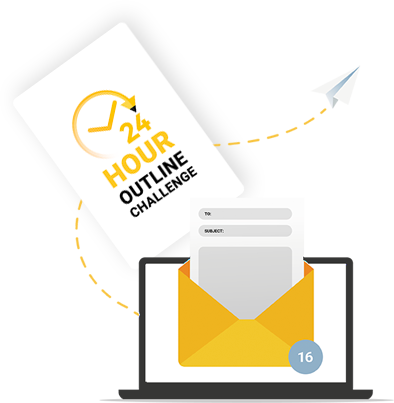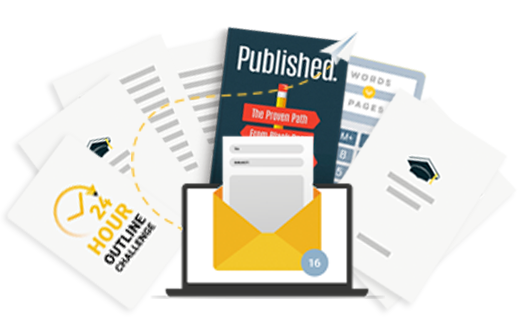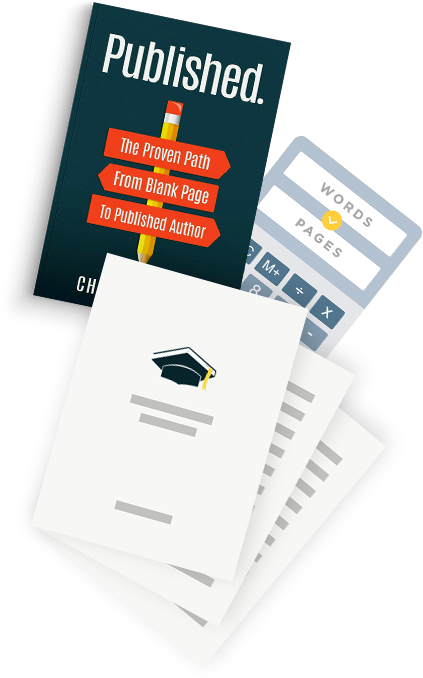Learning how to write an epigraph is often the difference between readers taking your work seriously or the dreaded cliché starring as the front matter of your book. Writers desire readers to truly invest in their writing, and knowing how to write an epigraph well is a crucial first step.
Even if you choose to write a romantic comedy, including the correct genre of epigraph in your front matter, and in the right format, plays a large role in drawing readers into your story. But what exactly is an epigraph, what do writers use them for, and how do you write them?
Table of Contents
What Is An Epigraph?
An epigraph is a brief bit of copy in the front matter of a book that comes in the form of a quote. Often these quotes are from a poem or other type of thought-provoking phrase.
Despite the term epigraph not appearing too commonly in everyday language, you may be surprised how many you’ve come across. At the end of this article, I show you why. But first, let’s dive into why writers use them and then how to write an epigraph.
Why Writers Use Them
Wondering how to write an epigraph is often preceded by a curiosity of why they are used. Writers have an average of fifty to 100-thousand words of lines and paragraphs to include in their story—why include a lonely quote in the front matter? There are three key reasons why you should learn how to write an epigraph.
#1 – Establish Deeper Meaning
One of the primary reasons you should learn to write an epigraph is to guide your readers into a deeper level of your storytelling. Whether you want to draw them into fiction or nonfiction, epigraphs provide an intellectual map for readers to follow.
Providing your audience with a brief phrase, line of poetry, or idea via a quote gives them something to ponder as they turn to chapter one, page one, of your published work.
#2 – Provide An Idea To Build On
In addition to establishing a deeper meaning, learning how to write an epigraph acts as the scaffolding for your coming themes and ideas. For example, if you wrote a nonfiction manuscript on the power of taking control of your mindset, you may want to include a quote from a known mindset coach or famous individual.
Consider the power of including this brief line from Winston Churchill in your front matter: “Attitude is a little thing that makes a big difference.” This idea acts as the framework on which you build your book.
#3 – Acts An A Teaser
To continue with the Churchill quote, imagine you’re browsing through your local bookstore and pick up a new release. You flip through the first pages and see the quote. “Attitude is a little thing that makes a big difference.”
This one line teases the rest of the book. How can something as small as mindset make such a big difference? Maybe it’s worth purchasing the book to find out.
Exactly How To Write An Epigraph
Now that you know why writers use epigraphs, it’s time to discuss how to write an epigraph that acts as an aid to your story, not a detriment. Like everything, there is a way to write epigraphs badly and a way to do them well.
Stay In Genre
The genre of your book will influence the type of epigraph you choose to include. As mentioned above, if you want to write an epigraph for your romantic comedy you may want to choose one that is satirical in nature.
Conversely, imagine writing someone’s biography of coming of age during a difficult period in history. Satire will likely throw the reader off genre and take away from the story, perhaps even make it appear cheesy or cliché. Instead, consider a more thoughtful epigraph or one with a hint of philosophy behind it.
Less Is More
Epigraphs are by nature short and to the point. Knowing how to write an epigraph starts with knowing exactly what your book is about and how to sum up the main idea in a sentence or phrase. Just like elevator pitches, remember that less is more.
Remember Your Pitch
On the topic of pitches, your elevator pitch can act as as a great launching point for developing your epigraph. Learning how to write an epigraph is similar to crafting your elevator pitch.
- Keep your main theme front of mind
- Include keywords and phrases
- Cut any peripheral ideas
Your elevator pitch can inspire your epigraph. But remember, elevator pitches communicate exactly what happens in the story, whereas an epigraph incites readers’ curiosity about the story.
Examples Of Real Epigraphs
With all this information about how to write an epigraph and why writers use them, some concrete examples may help solidify what you’ve learned. Below is a list of the epigraphs that act as the cornerstone to some classics as well as some beloved works.
- The Sun Also Rises, Ernest Hemingway
- “You are all a lost generation.” —Gertrude Stein
- Fahrenheit 451, Ray Bradbury
- “If they give you ruled paper, write the other way.” —Juan Ramón Jiménez
- Coraline, Neil Gaiman
- “Fairy tales are more than true: not because they tell us that dragons exist, but because they tell us dragons can be beaten.” —C.K. Chesterton
- To Kill a Mockingbird, Harper Lee
- “Lawyers, I suppose, were children once.” —Charles Lamb
- Frankenstein, Mary Shelley
- “Did I request thee, Maker, from my clay, To mould me Man, did I solicit thee, From darkness to promote me?” —Paradise Lost
- Looking for Alaska, John Green
- “I have tried so hard to do right.” —President Grover Cleveland
- On Writing: A Memoir of the Craft, Stephen King
- “Honesty’s the best policy.” —Miguel Cervantes
- “Liars prosper.” —Anonymous
Notice that some of these epigraphs come from other books, some use more than one, and some authors use quotes from other authors.
When choosing how to write an epigraph for your book, you may want to browse other books in your genre and see what type of epigraphs their authors included. Epigraphs do not come in a one size fits all, so be specific, and remember the above key tips on how to write an epigraph.
Choosing Your Epigraph: Beginning Or End?
Deciding when to finally settle on your epigraph can be a difficult choice. Keep in mind that writing is an extremely subjective business. Some writers put their story together chronologically. Other authors write scenes as they come to mind and order them later on.
Depending on your personality, you may want to save creating your front matter until your final draft is edited and ready to go to print. On the other hand, maybe a specific quote inspired your story and you know exactly what to include as your epigraph.
Wherever you find yourself, remember that until your book is published, you can always change your epigraph. Including a placeholder epigraph on the first page of your first draft may be a helpful way to test out an option. You can always change the epigraph later.
Enjoy choosing the best epigraph for your book, and feel free to leave a comment on which quote you choose!



